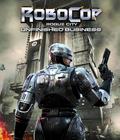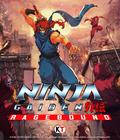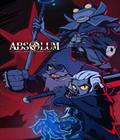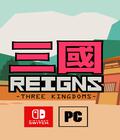The original Reigns was released to a bevy of platforms in 2016, and it became a big hit, especially on mobile phones. The simple interface made it easy for players to grasp how it controls, but the simplicity led people to explore a game that had loads of depth. Future entries in the series focused more on crafting new scenarios while leaving the mechanics alone since it was already close to perfect. Reigns: Three Kingdoms could initially be seen as more of the same, but a few changes to the formula craft something interesting for both new and longtime fans alike.
The story is your first hint at some of the differences. You start off at a facility in the modern day and are told that you're the newest test subject for a time traveling device. Before you can ask about what's going on, you're whisked away to China, circa 184 CE. The time period is known as the Three Kingdoms era of China; the Han Dynasty has passed, and the quest to unite all of China again has begun. Unlike before, you're playing as a simple commoner instead of a noble leader, so you must work your way up until you attain a position of power and unite the 13 lands once more.
If you've played any of the other games in the series, you'll know what to expect. You're presented with a card, usually of a person, and are presented with some dialogue that usually ends with a question. Like a dating app, your decisions are made by either swiping the card left or right, with each direction giving a preview of the answer before you commit and move on to the next card. Despite not being a ruler, you are asked questions that include philosophical ideas, joining up with an army commander, and deciding to get married. The situations range from the serious to the silly at an uneven pace, which keeps you on your toes and makes you laugh the first few times.
The cards and answers give you a good idea of the story outcome, but they don't tell the whole picture, as you'll notice that there are four icon meters at the top of the screen that represent things like military might, the happiness of the people, necessary supplies, and overall happiness. Almost all decisions affect one or more of these meters. Your natural instinct is to fill up the meters, but doing so yields the same result as emptying any meter: death. The cause of death comes suddenly and ranges from the hilarious to the very gory, depending on which meter was affected; your job is to keep everything balanced if you want to have your run last as long as possible. Like previous games in the series, death is not the end. You'll be sent back to the last year as someone related to your previous character with all of the quests, regions, and other unlocks still at your disposal.
The system remains fun once you understand what the game wants; working toward that balance is much more difficult than going for your own whims. Running into new characters can still be a crapshoot in randomness, but you have some agency over how you get to certain questlines instead of randomly stumbling across them. Sessions can still be short, but you'll retain a feeling of making progress.
Interestingly, one of the weaker points of Reigns: Three Kingdoms has to do with the historical setting. The jokes and absurd questions are present but not as plentiful as before, and there's a commitment to keeping things going toward a certain path rather than freeforming. The bigger issue is in the story consistency, as you'll sometimes find yourself being reincarnated as a character that is seemingly at odds with a faction that your previous character was paired with. Things set themselves right after a while, but it can be confusing when it occurs. While that sort of confusion derails the historical tale, it works to its benefit for the present-day storyline. The little clues that get dropped by other time travelers during your journey open up the idea to there being ulterior motives to these trips. The fact that your operator doesn't answer any of your pressing questions lends enough credence to this that you'll try to solve this big mystery.
One new thing to the game are battles, which can pop up in the main game depending on your choices. The cards you use will be of characters collected throughout your journey, and while most have basic health and attack stats, others have a few special traits, such as using stamina to increase attack power after surviving an encounter or damaging multiple opposing cards at once. You start by drafting up to four cards from the deck, but you can re-draft cards up to three times before the battle begins. On your turn, you rotate the cards on the field to play the next one, and you can do this until your number of actions is depleted. Cards can be destroyed, but that isn't necessarily the goal, as a player can rotate into a blank spot a few times to draw a new card to fill in. However, destroying a card gives the player access to the opponent's supply crate in the middle of their field, and destroying that ensures victory.
Just like the main game, the battle mechanics take the fundamentals of a trading card game and distill them into something that's easy to understand. Cards with special abilities never get too complicated, and the flexibility of being able to re-draft cards at the beginning ensures that the only way to start with a bad hand is through bad luck. The only real knock against this mode is that the AI tries to emulate human behavior by shifting card selections before committing to the move, and that can become annoying, especially if the choices between cards end with the same result. It doesn't go on for too long, but it can feel like it's an arbitrary move. The battles are enjoyable enough as a change of pace, but those who don't care for them will be happy to see an option to have you automatically win battles to return to the simple decision-making process.
Thanks to the battle mode, multiplayer has been introduced to the series. The rules are the same as in the main game, so you'll draft cards from the premade deck and rotate them left or right to kill the enemy card and destroy their stash. The prospect of multiplayer is nice, but the problem is in the player pool — or lack thereof. There's simply no one playing multiplayer online, at least when we tried during our review period. The game compensates by having bot battles available, but unless you have friends to battle with, you'll skip over this option in favor of more time with the campaign.
The Reigns series has always coated its presentation in simplicity, and that remains true in this latest iteration. The two-tone shades of color give the game a nice cartoon look, while the simple drawings for characters and backgrounds look pleasant while providing enough detail to make them instantly recognizable. The music is always pleasant, and that can catch you off guard when you die and the music isn't sad.
The game's performance on the Steam Deck is very good, which shouldn't be surprising considering that this was originally a mobile game. The simple appearance lends itself well to the device's resolution, and while it isn't necessary, the game locks itself to 60fps. The game controls well with a touch-screen, but using standard controller inputs feels intuitive enough that it's be the preferred method of controlling the game. Battery life is also good, as a full charge gives you a little under five hours of play, so you can definitely finish a few rounds before needing to plug in the Steam Deck.
Like its predecessors, Reigns: Three Kingdoms does a good job of taking a simple and easy-to-understand mechanic and making it a big part of a very substantial adventure. The change to a real historical setting is nice, but the original story is much more interesting to follow and uncover. The balancing act for card selection is simple but fascinating once you understand meter management. The battle system follows the same "simple but good" philosophy of the main game. If you're a fan of the previous titles, Reigns: Three Kingdoms is worth checking out, especially given the game's low price of $2.99.
Score: 7.5/10
More articles about Reigns: Three Kingdoms










 Inspired by The Romance of the Three Kingdoms series, Reigns: Three Kingdoms will have you swipe through military negotiations, marry to strengthen alliances and recruit soldiers to fight in turn-based card battles in this historical epic.
Inspired by The Romance of the Three Kingdoms series, Reigns: Three Kingdoms will have you swipe through military negotiations, marry to strengthen alliances and recruit soldiers to fight in turn-based card battles in this historical epic.




